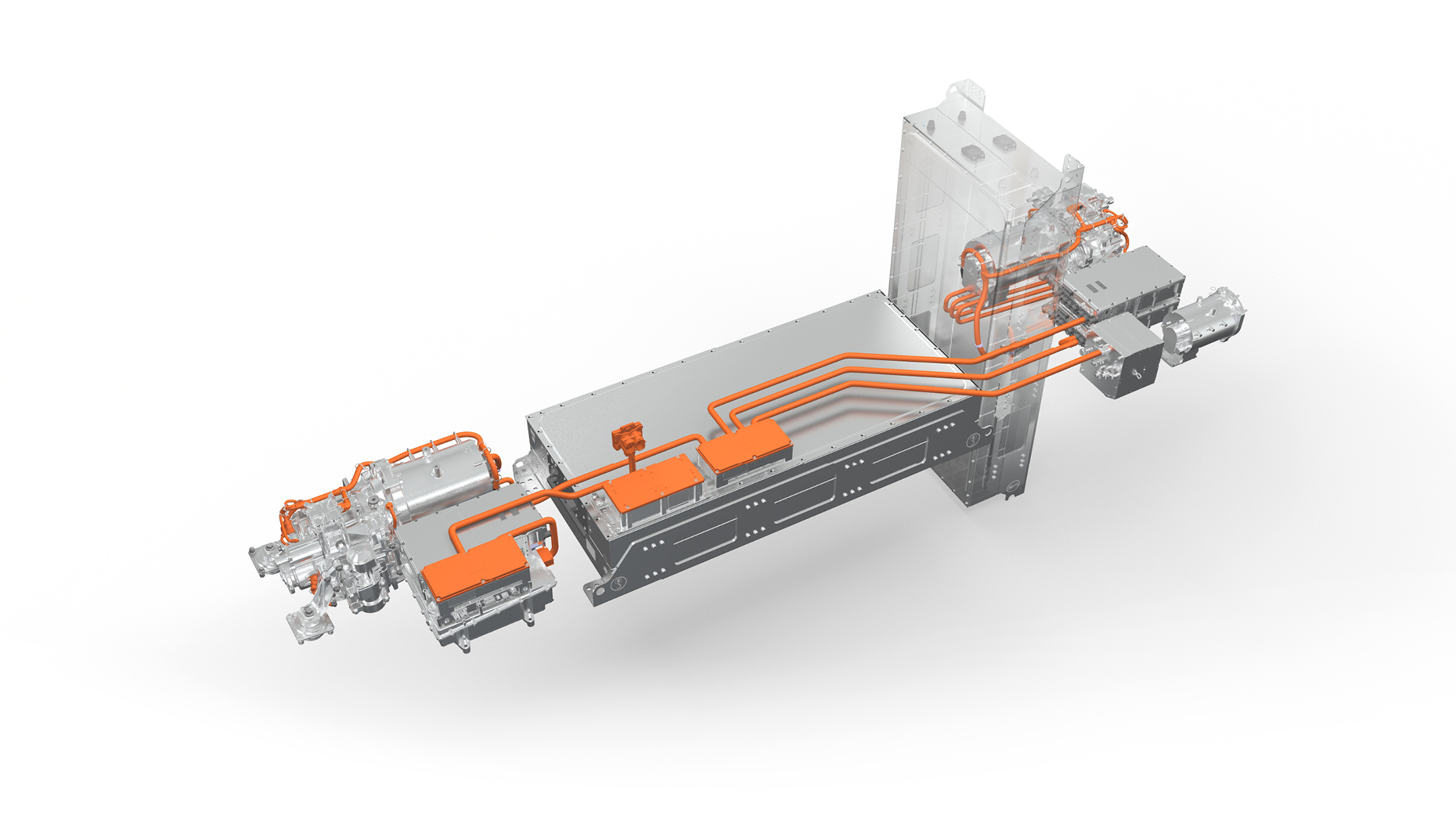
If there are any lingering doubts left regarding the reliability of electric vehicles (EVs), a new electric fire truck from the firm Rosenbauer should lay them to rest once and for all. After all, breakdowns and other mishaps can have life-or-death consequences in emergency services. The new fire truck is designed to demonstrate that electrification meets, and beats, diesel engines on performance and on other measures, too.
Volvo and Rosenbauer team up for a revolutionary electric fire truck
Rosenbauer selected Volvo Penta to provide the drivelines for its new electric fire truck, dubbed Revolutionary Technology.
Three of trucks were delivered last year to fire departments in Berlin, Amsterdam and Dubai for on-the-road customer testing, and Rosenbauer has modified the design to introduce a version in North America, too. Last week Volvo announced that it has also begun production-scale manufacturing of the truck’s electric drive system (as shown below).

Rather than simply replacing a diesel engine with a battery on a conventional fire truck, Volvo and Rosenbauer collaborated on a new electric fire truck design that takes full advantage of the flexibility and space-saving features of all-electric technology.
“By walking away from conventional commercial vehicle concepts and developing an electric solution for the truck’s driveline, Volvo Penta and its customer Rosenbauer have introduced a completely new vehicle architecture which is set to transform the fire service industry,” Volvo explained last year. “With its electric driveline, the fire truck boasts excellent ergonomics, functionality, and safety, as well as high loading volumes, compact dimensions and one-of-a-kind agility.”
To be clear, Volvo and Penta are not taking any chances. The new fire truck is equipped with a backup diesel engine in case of long deployment. However, Volvo anticipates that the battery system will provide ample power for all but the most extreme use cases.
The many benefits of an electric fire truck and other trucks, too
The elimination of vehicle emissions is especially important in the emergency services field, where fire trucks and other vehicles often remain parked in idle mode for long stretches of time.
Diesel engines and diesel generators add considerable noise and air pollution to situations that are already stressful and dangerous. Electrification provides a significant health and safety advantage for both first responders and victims, as well as bystanders and local residents.
By demonstrating the peak capabilities of EV technology, the new electric fire truck could also help accelerate the electrification of other types of community service vehicles that could have an impact on local neighborhoods with diesel pollution.
That movement is already beginning to take hold, though it could use a big push. Utilities are slowly beginning to electrify their service fleets, as are delivery fleets including Amazon, UPS and FedEx. The U.S. Postal Service is another fleet owner that comes to mind as a ripe candidate for electrification.
The U.S. military is another high-volume fleet owner with an interest in fleet electrification. A recent analysis concluded that EV technology is not yet capable of powering an entire combat deployment, but electric vehicles and renewable energy are becoming key elements in the Defense Department’s efforts to improve community health and safety in and around its facilities.
Other types of neighborhood trucks could also improve community relations by cutting noise and air pollution from diesel engines and generators, including ice cream trucks and food trucks.
Who will pay for all this?
Fleet electrification has been off to a slow start, mainly because the up-front cost of an electric vehicle is still relatively high. However, EV technology provides long term savings in fuel and maintenance, offering solid bottom-line footing that can accelerate the transition out of diesel.
In addition, analysts anticipate that the up-front cost of an electric vehicle will meet, and then beat, its conventional counterpart within the next few years, as the cost of EV batteries continues to decline.
G7 member nations passed up a chance to promote electrification in the 1970’s, but at last month’s meeting they included electric vehicles among a list of agreed-upon measures to slash carbon emissions. The agreement was panned as too little, too late by some critics, but it will help promote government policies that support electric vehicle manufacturing.
If the power of public policy does accelerate the electrification trend, in a few short years the neighborhood children will not have to breathe in diesel fumes while waiting in line for the ice cream truck, though you may still have to tolerate the jingle blaring from its loudspeakers.
Image credits: Connor Betts/Unsplash; Volvo Group

Tina writes frequently for TriplePundit and other websites, with a focus on military, government and corporate sustainability, clean tech research and emerging energy technologies. She is a former Deputy Director of Public Affairs of the New York City Department of Environmental Protection, and author of books and articles on recycling and other conservation themes.














